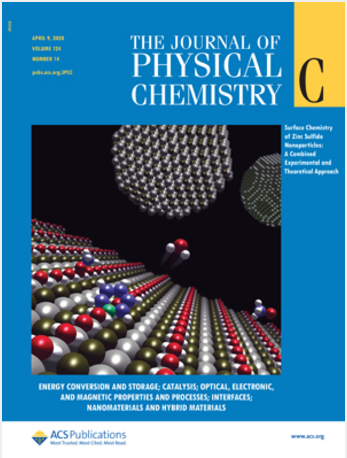Unified Model for Plasmon Coupling in Metal Nanoparticles and Effect of the Polymer Shell
IF 3.3
3区 化学
Q2 CHEMISTRY, PHYSICAL
引用次数: 0
Abstract
Plasmon resonance and its coupling in metal nanoparticles enable the modulation of the resonance spectrum with particle size, shape, and near/far-field interactions. The plasmon coupling of the resonance spectrum is blue-shifted when the nanoparticles are separated by a distance in the range of lattice spacings but is red-shifted for larger separations (much more greater than the lattice spacing). The spectral behavior in these two regimes is driven by charge transfer and plasmon hybridization and has not been explained simultaneously for an assembly of nanoparticles with existing models. Herein, we developed a model by considering a virtual nanobridge for lattice parameter spacing to account for the charge transfer between nanoparticles in the dimer, trimer, tetramer, and pentamer assemblies, while for larger separations, the coupling adheres to hybridization. The interparticle separation-dependent spectral shift in both regimes was established well with the proposed unified plasmon coupling model, which is consistent with previous experiments and theories and is applicable to assemblies of any number of nanoparticles. We also showed the effect of the polymer shell on monomer/dimer plasmons and examined the polarization-dependent plasmon coupling in multinanoparticle assemblies, providing insight on tunable plasmon enhancement toward advanced quantum devices.

金属纳米粒子中等离子体耦合的统一模型及聚合物壳的影响
等离子体共振及其在金属纳米颗粒中的耦合使得共振谱随粒子大小、形状和近场/远场相互作用的调制成为可能。当纳米颗粒在晶格间距范围内分离时,共振光谱的等离子体耦合发生蓝移,而当纳米颗粒间距较大时(远大于晶格间距),共振光谱的等离子体耦合发生红移。这两种状态下的光谱行为是由电荷转移和等离子体杂化驱动的,并且不能同时用现有的模型解释纳米粒子的组装。在此,我们开发了一个模型,通过考虑晶格参数间距的虚拟纳米桥来解释二聚体、三聚体、四聚体和五聚体中纳米粒子之间的电荷转移,而对于较大的分离,耦合坚持杂化。所建立的统一等离子体耦合模型很好地建立了两种体系中粒子间分离相关的谱移,该模型与以往的实验和理论一致,适用于任意数量的纳米粒子的组装。我们还展示了聚合物外壳对单体/二聚体等离子体激元的影响,并研究了多粒子组件中极化依赖的等离子体激元耦合,为先进量子器件的可调谐等离子体激元增强提供了见解。
本文章由计算机程序翻译,如有差异,请以英文原文为准。
求助全文
约1分钟内获得全文
求助全文
来源期刊

The Journal of Physical Chemistry C
化学-材料科学:综合
CiteScore
6.50
自引率
8.10%
发文量
2047
审稿时长
1.8 months
期刊介绍:
The Journal of Physical Chemistry A/B/C is devoted to reporting new and original experimental and theoretical basic research of interest to physical chemists, biophysical chemists, and chemical physicists.
 求助内容:
求助内容: 应助结果提醒方式:
应助结果提醒方式:


